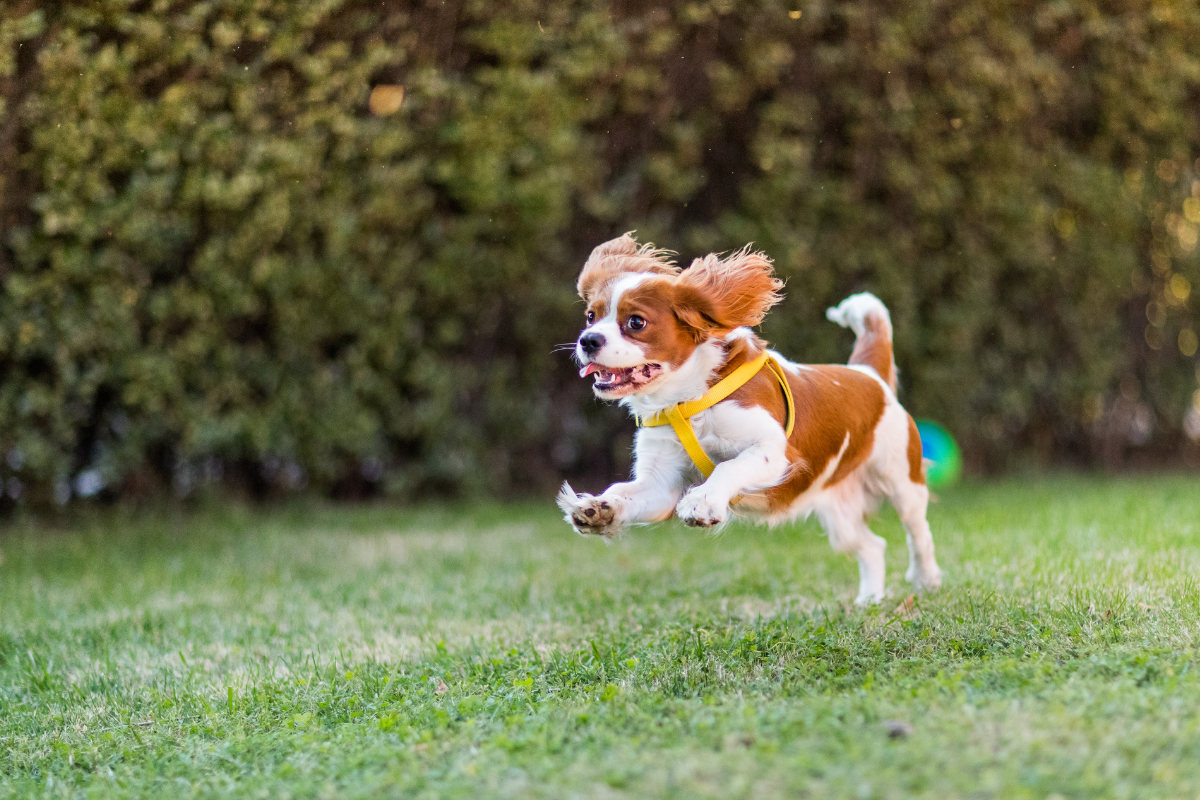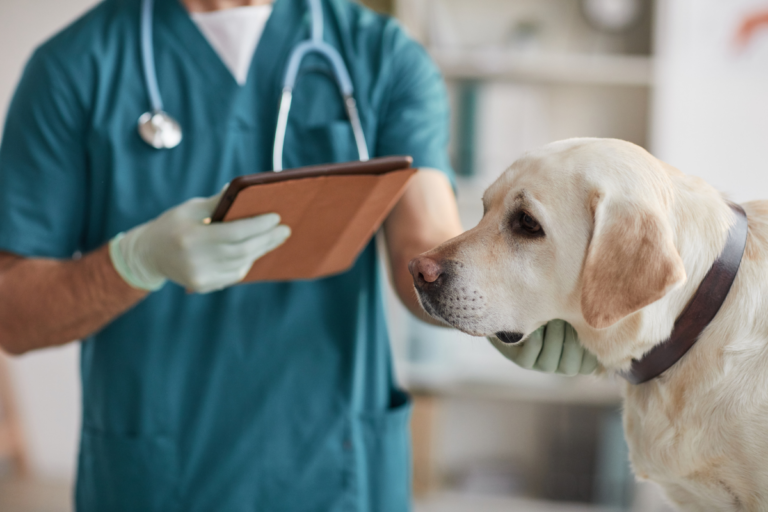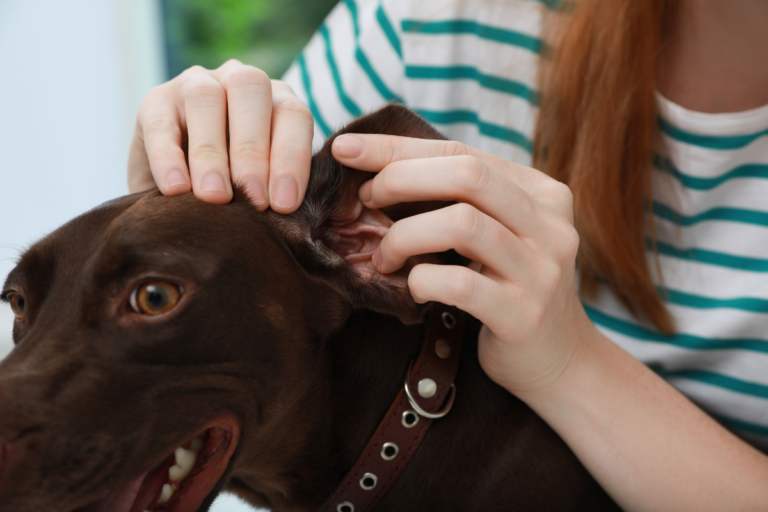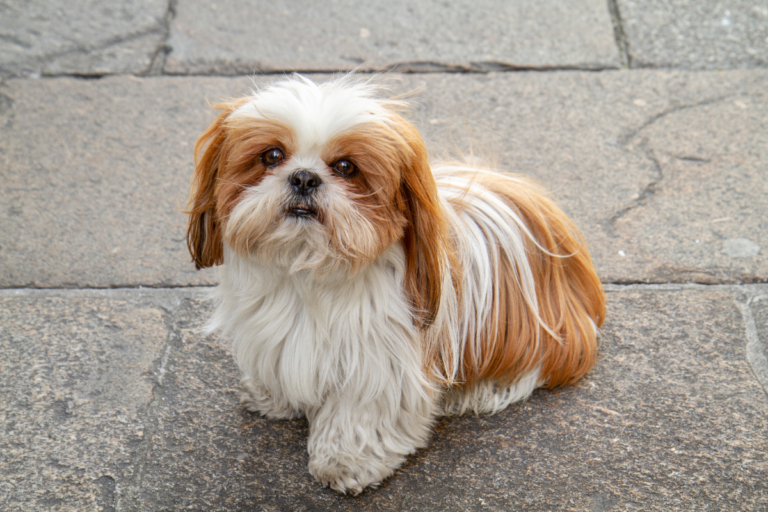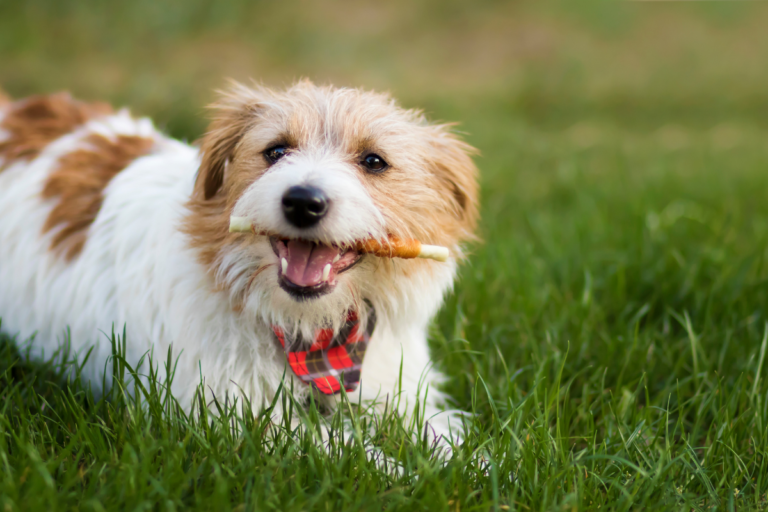Navigating Cavalier Health: Tips to Keep Your Pup in Prime Condition
Caring for Cavalier Health
To help our Cavaliers live their best doggy lives, it’s handy to know the health quirks they might have inherited. By figuring these out early, we’re setting them up for fun, tail-wagging days without a care in the world.
Common Health Issues
Cavaliers, just like other fur babies, come with their own health baggage. Staying aware keeps us ahead of the game.
Here’s the lowdown on what these lovely canines might face:
- Syringomyelia: This one’s a tongue-twister but seriously needs our attention. This painful condition happens when the brain gets all squished. Getting a vet involved quickly can make all the difference (PETA).
- Mitral Valve Disease (MVD): It’s a heart issue where a leaky valve gets the heart all aflutter, and not in the good way. Keep tabs on any signs of trouble like coughing or tiredness, and loop in the vet if anything seems fishy.
- Ear and Eye Problems: Those droopy eyes and floppy ears are adorable but can lead to infections or dry spots if you’re not vigilant (thanks to PETA).
Want some deeper digs into these issues? Take a peek at our resources on addressing specific conditions.
Genetic Predispositions
It’s not all down to fate, our Cavaliers got some hand-me-downs in the health department too. Knowing the genetic stuff can help us play it smart.
Here’s the scoop on what tends to pop up in Cavaliers thanks to their genes:
- Hip Dysplasia: About 14% of these pups might have joints that don’t quite fit right, setting the stage for arthritis (Scruffy Woofs).
- Mitral Valve Disease (MVD): Yes, this one again. It’s quite the gate crasher at the Cavalier health party. Regular vet dates can keep it in check.
- Brachycephalic Obstructive Airway Syndrome (BOAS): Those cute little snouts can make breathing tough. Keep an eye on their puffing and panting.
| Health Condition | Prevalence (%) | Possible Problems |
|---|---|---|
| Syringomyelia | > 90% | Ouch, bad brain days |
| Hip Dysplasia | 14% | Arthritis parties |
| Mitral Valve Disease (MVD) | High | Heart hiccups |
| Ear and Eye Problems | Common | No sight/ear itches |
Staying clued up on these traits gives us the best shot at treating our Cavaliers like the royalty they are. Smart care, like regular vet visits and a good diet, are our best allies. For tips and tricks on keeping their health on lock, swing by our page on preventative care for Cavaliers.
Let’s team up to keep our Cavaliers bouncing with that endless joy they’re famous for!
Addressing Specific Conditions
When it comes to looking after Cavalier King Charles Spaniels, we gotta be sharp about the health quirks these little charmers bring along. We’ll chat about syringomyelia, mitral valve disease (MVD), and the oh-so-common ear and eye hiccups.
Syringomyelia and Its Management
Syringomyelia is the pesky gremlin affecting around 70% of Cavaliers over the age of six. It’s where unexpected cavities filled with fluid pop up along the spinal cord, creating a real pain—literally—and sometimes leading to paralysis.
Hubbub Around Syringomyelia
- Who gets it?: 70% of senior Cavaliers
- Symptoms: Aching and even paralysis
- What can we do?: Meds and physical therapy
No magic fix here, but we can definitely help them chill a bit. Working with a vet to create a plan is the way to go. Medication, like NSAIDs, gabapentin, and steroids, can take the edge off. And don’t skip those vet check-ups—they’re key to keeping everything in line. Curious about other related ailments? Our dog diseases and symptoms page has you covered.
Mitral Valve Disease (MVD)
This one’s a heartbreaker—literally. Mitral valve disease slinks its way into over half of Cavaliers by age five, making their hearts work harder than it should.
MVD Rundown
- Prevalence: Rampant in Cavaliers
- Symptoms: Heart murmurs, coughs, and breathing pain
- Common victims: Over half by age five
Catching it early with regular vet visits can be a lifesaver. If coughing or breathing changes show up, it’s time for a vet visit. Medicine like ACE inhibitors or diuretics can ease symptoms, so it’s worth checking in for updates. For more insights, hit up our dog heart disease guide.
Ear and Eye Problems
Cavaliers are no strangers to pesky ear and eye issues like infections and retinal problems leading to vision loss.
Ear and Eye Issues Exposed
- Ear Trouble: Pain, gunk, maybe surgery
- Eye Woes: Sight going south; regular check-ups a must
Gently cleaning those ears can ward off infections, and keeping tabs on vision can lead to early fixes. If any scratching or funky eye stuff happens, call the vet pronto! Keep your pup in tip-top shape with help from our dog diseases article.
Being ahead of the game with a Cavalier’s health spells out happier days for them and peace for us. For extra tips, scope out our articles on dogs teeth and warding off nuisances like dogs and ticks.
Preventative Care
Taking care of our furry pals means staying ahead of pesky health problems. Here, we’re gonna chat about some common issues Cavaliers face, like wobbly hips, heart stuff, and the challenge of short snouts.
Hip Dysplasia and Luxating Patella
When it comes to hips not fully functioning and those annoyingly dislocating kneecaps, our Cavaliers often draw the short straw. Hip dysplasia is a bit like getting a bum deal on a second-hand car—the hip joint ain’t fitting right, and pretty soon you’ve got arthritis setting in. Meanwhile, the luxating patella, or “kneecap-gone-walkabout,” means the kneecap wanders away from its happy place.
But hey, we’ve got some tricks. Regular trips to the vet are like road service checks for your pooch, catching things early. Keep their waistlines trim, since extra weight ramps up the risk. Also, a good old walk or some controlled play will do wonders for their little joints.
| Routine | Why We Do It |
|---|---|
| Vet Check-Ups | Spotting issues pronto |
| Weight Watch | Less stress on those pins |
| Exercise | Buffing up the joints |
Heart and Neurologic Health
Cavaliers have a penchant for heart hiccups like mitral valve disease (MVD) and brainy troubles like syringomyelia. MVD affects the heart’s valve, leading to serious heart problems if you ignore it (Dr. Judy Morgan).
The solution? Keep up with those cardio vet sessions and feed your pup a diet packed with heart-helping goodies. We’ve got a whole section on dog heart disease for you to poke around.
For the brain department, make sure to schedule those neurologic check-ups and keep a close eye on any weird behaviors or movements. For further reading, see seizures in dogs symptoms.
| Who Needs It | How to Handle It |
|---|---|
| Heart Problems | Regular cardio vet gigs |
| Syringomyelia | Brain health checks |
Brachycephalic Obstructive Airway Syndrome
Ah, those squishy faces that we adore, but they come with their own set of challenges like BOAS (PETA). This can make breathing a bit tough, especially when it’s hot or after a romp outside.
To help them out, a cool spot to chill and keeping exercises light goes a long way. Visits to the vet can catch any early signs of trouble. Watch their weight to keep their airways working as best they can.
For more tips on respiratory chellenges, check our piece on dog heart problems.
| What to Do | Why It Matters |
|---|---|
| Keep it Cool | Beat the heat stress |
| Manage Weight | Makes breathing easier |
| Vet Visits | Catch breathing woes early |
Following these tips can help keep our Cavaliers thriving and wagging more. For more advice, dive into our articles on dog diseases and symptoms.
Winter Health Tips
Brrr! As the chilly days roll in, let’s make sure our beloved Cavalier King Charles Spaniel stays cozy and snug. Those winter months can be rough, but with a bit of planning, we can keep our furry sidekick in top shape. Here’s the lowdown on keeping your pup comfy in the cold.
Protecting Your Cavalier from Cold
Our little Cavaliers might be royals in name, but they’re definitely not suited for a polar expedition. They’re a bit delicate when it comes to cold, so here’s how we can play it smart:
-
Limit Outdoor Time: Nobody wants to freeze, especially not your pup. So, let’s keep those outside breaks short and sweet. Potty runs should be quickies, not marathons. For a deeper dive on keeping warm, have a gander at Cavalier Gifts.
-
Use Dog Boots: With paws that aren’t exactly built for snow, consider investing in some dog boots like Saltsox. They’ll keep those tootsies safe from the slippery stuff. For those quick potty hops, toddler socks can be a cool hack. Get more tips at Cavalier Gifts.
-
Clean Paw Pads: Salt and ice are not your Cavalier’s friends. After each snowy adventure, take a sec to clean off their paws. It’s a small step that prevents big owies.
-
Dog Coats and Sweaters: Dress up your pup like the pupperazzi star they are! Sweaters and jackets keep the shivers away. Look for something that covers them well and keeps them moving. More options over at Cavalier Gifts.
-
Cleared Potty Areas: Shovel up a little space in the yard so your pup doesn’t have to squat in a snow pile. Keep it clear for quick relief.
Here’s a handy table to help figure out how long your doggo should be braving the elements:
| Temperature | Outside Time | Gear Needed |
|---|---|---|
| Above 40°F | No worries | None |
| 32°F – 40°F | Up to 30 min | Coat/Sweater |
| 20°F – 32°F | Up to 15 min | Coat + Boots |
| Below 20°F | < 10 min | All Warm Gear |
| (Cavalier Gifts) |
Winter Diet Recommendations
When the temperature nosedives, a Cavalier’s diet might need a slight tweak to keep them in fine fettle. We’ve got some tasty tidbits for their bowl:
-
Incorporate Warming Proteins: Meals with proteins like chicken or lamb can bring some heat. Think of them as the cozy soup of the dog world. More meal magic can be explored at Cavalier Gifts.
-
Add Warming Spices and Herbs: A whisper of ginger or turmeric can spice things up, helping with heat and digestion. Just a dab will do.
-
Monitor Weight: Don’t let your Cavalier chunk up with winter blubber. Keep their diet balanced as their energy needs may rise a tad.
-
Stay Hydrated: Yep, sipping water isn’t just for summer—they need to stay watered all year.
To keep your Cavalier living their best winter life, a quick chat with the vet doesn’t hurt, and be sure to check out our pages on dog diseases and dog diabetes symptoms. By wrapping up warm and nibbling right, your Cavalier will be toasty and healthy, ready to wag their way through winter.
Nutrition for Cavaliers
Feeding our Cavalier King Charles Spaniels can feel like a guessing game at times, right? We all want our furry pals to be healthy, happy, and bursting with tail-wagging energy. Let’s chat about the grub that’s best for them, especially diving into the raw food buzz, those pesky carbs, and the must-have nutrients to keep them in top-notch shape.
Raw Food Diet Benefits
Thinking about trying a raw food diet for your Cavalier King Charles Spaniel? You’re onto something! A raw diet could be your doggo’s best friend. It’s known to help with common doggie dilemmas like ballooning up, dental chaos, creaky joints, and those relentless itches (ProDog Raw). You see, their tummies are pretty much built for chomping on fresh, protein-packed goodness.
Imagine a bowl filled with food that’s got a splash of water in it already—70% moisture to be exact. That’s the typical raw diet and it helps your pup stay hydrated, which means they ain’t always panting for more water (ProDog Raw). Plus, a diet like this can give them lush, healthy skin, tidy poos, and a major pep in their step.
Risks of Carbohydrate-Based Diets
Now, let’s have a real convo about kibble. Sure, it’s easy to scoop and serve but it’s often jam-packed with carbs and our little Cavaliers’ tummies aren’t meant for a carb-fest. They can end up with grumpy organs like the pancreas, leading to serious issues like pancreatitis (ProDog Raw). Plus, the carb levels in kibble can go through the roof without doing anything nice for their health (Cavalier Health).
| Diet Type | Carbohydrate Content (%) | Health Risks |
|---|---|---|
| Raw Food Diet | <5% | Chill on the inflammation |
| Kibble | 30-60% | There’s a risk of it—pancreatitis, and extra pounds |
Essential Nutrients in a Cavalier’s Diet
To keep those wagging tails and heart-melting eyes beaming, our Cavaliers need the right mix of goodies in their bowls. We’re talking top-notch protein, healthy fats, a pinch of veggie carbs, and all the good vitamins and minerals.
- High-quality Protein: Meaty goodness helps grow strong muscles and keeps them in shape.
- Essential Fats and Omegas: Fish oils and seeds are super snacks for a shiny coat and a sharp mind.
- Carbohydrates: Just a bit from veggies, herbs, and berries for fiber and a pinch of energy.
- Vitamins and Minerals: Nature’s gifts from bones and plants.
- Hydration: Keep it coming with moist foods and water (ProDog Raw).
Got questions about dodging health problems like dog heart failure or puzzled by dog diseases and symptoms? Our site’s got loads more info to sniff out.
Choosing the right chow for your Cavalier King Charles Spaniel isn’t just about filling their bowl; it’s about keeping them on their paws and living their best life. Cheers to happier days and healthier tails!
